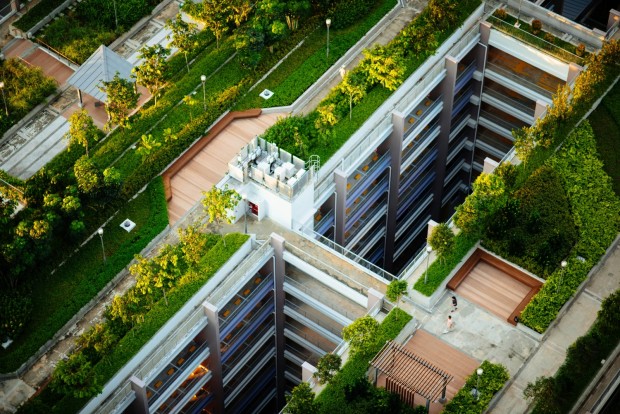The construction industry is responsible for significant carbon emissions; therefore, it is of utmost importance that their practices be environmentally friendly. But how could they accomplish it? Explore these six sustainable building practices commonly used in the construction sector.

(Photo : Unsplash/CHUTTERSNAP)
1. Source Local Materials
Through globalization, acquiring resources from any location on the worldwide map is feasible. Because of this, professionals in the building industry and designers have access to a broader range of materials. On the other hand, the transportation of construction materials over large distances requires a more significant amount of energy and resources. If you want to take a more environmentally responsible approach, choose readily available materials in your immediate area, which will reduce the carbon footprint. In addition, patronizing local businesses enables such businesses to expand their operations.
2. Opt for Non-toxic Substances
Make every effort to guarantee that all of the substances utilized in the building process are made from non-toxic components and produced through environmentally responsible methods. Accordingly, paints and solvents are only two examples of the many different building materials in this category. Remember that non-toxic substances won't have any adverse health effects. Moreover, inhabitants have a lower risk of developing respiratory problems if they use paints and solvents that are not harmful.
3. Reuse Building Materials
Construction of a new building or renovation of an existing one will inevitably generate substantial refuse. Examples are concrete, steel trusses, hardwood planks, and even carpeting. It is a more environmentally beneficial way to hunt for crushing facilities rather than dumping rubbish from construction sites into the nearest landfill. These facilities allow waste building materials like concrete to be transformed into a dry aggregate. Thus, recycled and repurposed for subsequent construction endeavors are the transformed materials. By utilizing these recycled materials, the company may incur additional cost savings and prevent further waste from entering landfills.
Also Read: Why Do Architects Hesitate to Use Stone in Construction Projects?
4. Implementing Sustainable Solutions
Your sustainability goals may conflict with other priorities for lowering costs and reaching stringent timelines. While minimizing environmental consequences, reducing costs, and optimizing energy efficiency, it is difficult to establish and implement a project plan that balances the priorities of regulatory requirements and stakeholders' interests. Implementing reporting and communication systems on a construction site ensures that all participating parties are on the same page.
5. Consider the Benefits of Prefabrication
Changing to a prefabrication approach comes with two key advantages that people should consider. Producing prefabricated components by workers in an assembly line method enables economies of scale, enabling better speed and efficiency. Furthermore, maintaining the ability to provide tailored solutions to clients requires modifying how the diverse elements are assembled to form the ultimate configuration.
Nevertheless, energy conservation is the second advantage. The transportation of heavy machinery from one location to another requires a significant amount of gasoline. It can save much fuel by storing the equipment in a central place and transferring the needed components.
6. Use Equipment Efficiently
Your project's carbon footprint and energy costs will increase by one minute for every minute a piece of machinery is left idle or misused. Make sure that every piece of machinery and any needed supplies are prepared and ready to go at the precise moment they are required. Seek out ways to lessen the demand for heavy machinery and power tools over time by choosing resources that may be built in a manner that is less harmful to the environment.
Related Article: Uncovering the Pros and Cons of Traditional Construction Methods in Architecture







